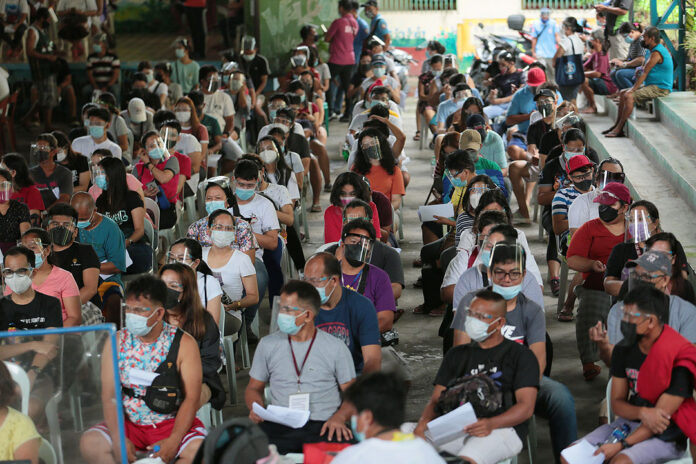THE DEPARTMENT of Health (DoH) reported 21,261 coronavirus infections on Thursday, bringing the total to more than 2.3 million.
The death toll rose to 36,018 after 277 patients died, while recoveries increased by 13,644 to more than two million, it said in a bulletin.
There were 177,946 active cases, 86.1% of which were mild, 9.2% did not show symptoms, 1.4% were severe, 2.65% were moderate and 0.6% were critical.
Eighty duplicates had been removed from the tally, 65 of which were reclassified as recoveries and one as a death, while 174 recoveries were reclassified as deaths. Two laboratories failed to submit data on Sept. 14.
The agency said 111 of 121 provinces and cities in the country were at high risk for the coronavirus, Health Secretary Francisco T. Duque III said at a taped Cabinet meeting aired on Thursday.
He said the country posted an average of 83 deaths daily in the first two weeks of September.
Meanwhile, President Rodrigo R. Duterte said DoH had requested P1.23 billion more funds from the Budget department to finance the special risk allowance of health workers. About P15.1 billion has been released for the allowance and other benefits, he added.
At the same meeting, Mr. Duterte said his government would seek more funds to hire more health workers during the pandemic.
“We will see what we can do,” Mr. Duterte said. “We will try to look for the money to have more recruits joining this fight against COVID.”
Mr. Duterte made the remark amid reports that the country’s hospitals continue to grapple with workforce shortage.
Earlier this week, Philippine General Hospital (PGH) spokesman Jonas D. del Rosario said manpower at the country’s main COVID-19 referral hospital was facing a workforce crisis.
Mr. Del Rosario said health workers at the state-run hospital were getting sick, while volunteer doctors have opted not to renew their contracts. PGH was planning to hire private practitioners.
Presidential spokesman Herminio L. Roque, Jr. said 77% of intensive care unit (ICU) beds in the country had been used as of Sept. 15, while 69% of isolation beds and 73% of ward beds were occupied.
He said 79% of ICU beds in Metro Manila had been occupied, while 66% of isolation beds and 73% of wards were used.
More than 40 million coronavirus vaccines had been given out as of Sept. 15, Mr. Roque told a televised news briefing.
He added that 17.7million people or 22.91% of the country’s adult population had been fully vaccinated against the coronavirus.
The government on Sept. 16 started enforcing granular lockdowns with five alert levels in the National Capital Region (NCR). Metro Manila was placed under Alert Level 4, the second highest level, until Sept. 30.
The new lockdown strategy was enforced “at a time when we face the worst surge of COVID- 19 (coronavirus disease 2019) cases in the Philippines,” the Healthcare Professionals Alliance Against COVID-19 said in a statement.
“We now register more cases than at any other time since the pandemic started,” it said. “Health facilities are overwhelmed, resulting in patients dying unattended at home, in ambulances or in corridors.”
The group said the new lockdown scheme “does not reflect the true situation on the ground.” “We therefore strongly urge the government to acknowledge and address the inadequacies of our data reporting system that forms the basis for the alert levels.” — Kyle Aristophere T. Atienza

